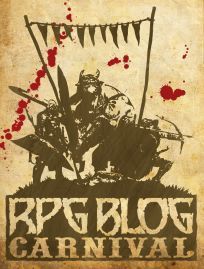
It’s something I’ve contemplated a lot over the last few years as my gaming group returned to playing Dungeons & Dragons and I struggled to come up with thoughtful and interesting fantasy encounters.
That’s because for most of the Blackrazor Guild’s 20-year history we’ve been playing D&D or Pathfinder. There’s a “been there, done that” feeling that’s as tired and cliched as the saying itself, and it’s one that’s hard to shake.
This wasn’t a problem when we switched things up and played other games in other genres. Our Star Wars: Saga Edition adventures mixed combat and skills, allowing frontline fighters and lightsaber wielding Jedi to take the fight to the enemy while the skillful scoundrels and scouts hacked computers and navigated around obstacles (think the Endor scenes in Return of the Jedi or the final desperate fight in Rogue One)
Our Weird Pulp/Savage Worlds adventures had lots of two-fisted heroes with witty banter as we drew inspiration from Hellboy and Indiana Jones. The game system helped tremendously as well; with Savage Worlds you never know when the dice are going to explode and things are change dramatically (both for the player characters and the villains).
With Dungeons & Dragons though, it’s been too easy to fall back on tropes and stereotypes of the fantasy genre. It’s also far too easy to look at it as strictly a mechanical challenge. I have players who can do A, B, and C, so I need monsters that can challenge them by doing X, Y, and Z. Coupled with having less time to prepare an encounter than I used to have, and you get encounters that can feel tired and generic (at least to me). That in turn can make designing encounters — heck, writing the entire adventure — a chore.
So how do you break out of that rut? I don’t have a great answer, but I do have strategies that I’m trying.
Defeating the Routine
Part of my strategy for defeating the routine is coming up with a better routine for campaign preparation. Two years ago I read Never Unprepared: The Complete Game Master’s Guide to Session Prep (Engine Publishing). One of it’s key tenants is that you need to spend time thinking about your adventures, writing them, and then revisiting. When writing the adventure, it suggests identifying what you’re trying to accomplish and then designing the adventure around that.
Crazy idea eh? Heck, you’d think we’d all be doing this, but I suspect few of us do. This was a major boon for me. By coming up with the list of goals that I was trying to accomplish in the session (move a particular story element forward, give a certain character a chance to shine, pose a particular environmental or social challenge, etc.) I primed my brain for creative thinking. Rather than staring at a blank computer screen wondering what I should write, I sit down knowing what I needed to do and just had to figure out how to do it.
Never Unprepared outlines an excellent, project management-inspired approach to organizing and executing your campaign. I can’t say I follow all of it, but at the very least all of my adventures begin with figuring out what my goals are.
Beyond Two Dimensional Thinking
As I took a few steps back and think about the encounters I enjoy most — as a game master and a player — I came to the conclusion that my favorite encounters are multidimensional ones that move the campaign’s story forward in someway.
By multidimensional, I mean that encounters should have multiple aspects to them. With combat encounters it shouldn’t be a slugfest between a single monster (or a single kind of monster) and our heroes. There should be a mix of creatures, terrain, and objectives that keep the player characters thinking.
For example, if the heroes encounter a gnoll warband while traveling overland, then maybe the gnolls have a small pack of hyenas that follow them, eager to dash in and attack anyone the humanoids knock down. The weather is overcast and hints of rain; that doesn’t add anything to this encounter but sets up the next day’s thunderstorm nicely. The terrain is broken, with copses of trees for the rogue to hide in, deep rain-carved gullies to force the players to think about movement, and a small hill providing high ground for the gnoll archers.
Meanwhile, the gnoll hunters have their own backstory — they’re gathering up slaves as a show of strength and prowess at an upcoming clan gathering in the far off hills to the north. That story element may never come into play, but if it does we’ll have a nice little subplot for the heroes to explore.
I know that these are the kinds of encounters I want to do design, but I still find myself with a mental block when it comes to writing such encounters for Dungeons & Dragons. To combat that I’ve turned to random generators.
I started using them when we launched our “playtest” D&D 5th Edition campaign (as detailed in “Game Day: Randomizing the Frontier”), and that use intensified over the last two years. I don’t blindly go with what the random generators give me; instead I use their results as a starting point that I can riff on. This is one of the reasons I love Volo’s Guide to Monsters (Amazon) — it not only includes great background information on monstrous cultures, it offers random tables for each of those creatures. It’s been a godsend for a World of Greyhawk campaign like mine, which takes place on the monster-infested Pomarj peninsula.
Taken together, these techniques reinvigorated my writing sessions and — I hope — improved my games.

